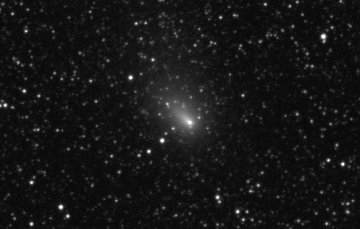 Autumn is here, and it's a wonderful time for stargazing. Find out what's up from Spaceweather PHONE.
Autumn is here, and it's a wonderful time for stargazing. Find out what's up from Spaceweather PHONE.
AURORA WATCH: A solar wind stream will hit Earth on Nov. 22nd or 23rd, and the impact could spark a geomagnetic storm. If you live in Scandinavia, Canada or Alaska, be alert for auroras.
SOLAR BLAST: Something exploded on the far side of the sun yesterday. The blast hurled a bright coronal mass ejection (CME, movie) over the eastern limb where the Solar and Heliospheric Observatory photographed it:

The source of the explosion could be a big sunspot which has just appeared in holographic images of the sun's farside. Advice to astronomers: keep an eye on the sun's eastern limb. The sun is spinning, and it will turn the source of the blast toward Earth in the days ahead.
COMET SWAN: Say good-bye to Comet Swan. But take one last look before it goes:

"As Comet Swan retreats to wherever it came from, it is passing through a deep star field in Aquila," says Mike Holloway of Van Buren, Arkansas, who took this picture on Nov. 19th.
The comet swooped through the inner solar system last month, briefly brightening to naked-eye visibility. Now it's heading back to the dark recesses of the outer solar system. Swan's orbit is a hyperbola, which means it will never return.
So, truly, take one last look. "The comet is about as bright as a 7th magnitude star," which makes it an easy target for backyard telescopes equipped with digital cameras. Comet Swan may be found not far from the bright star Altair just after sunset. [sky map] [ephemeris]
Comet Swan Photo Gallery

